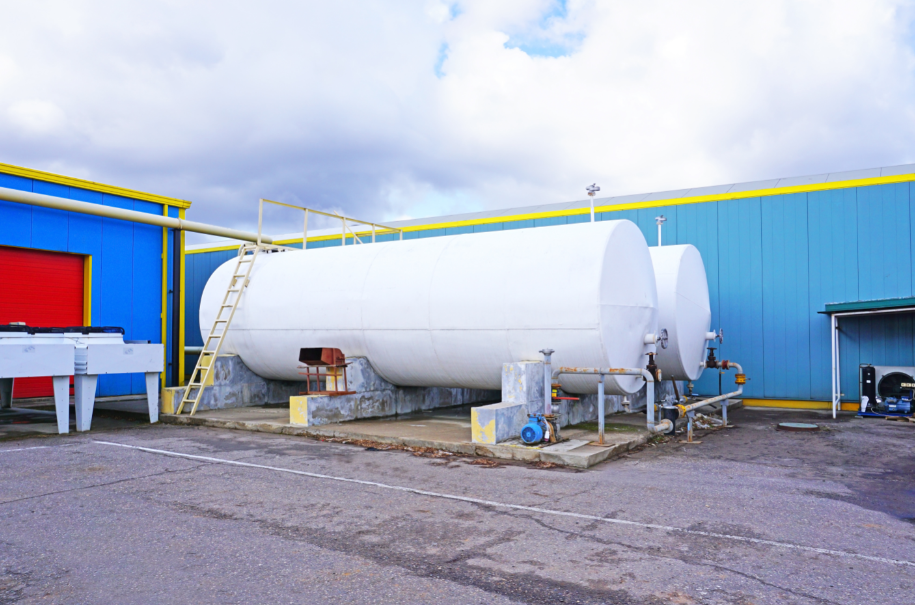
- admin
- August 18, 2021
5 Best Practices for Maintaining an Above Ground Storage Tank
An above ground storage tank can be a no-brainer over subsurface hazardous material storage. After all, the tank is right there in plain sight. However, to keep your tank safe and secure, you must follow precise procedures and measures.
Here are 5 suggested techniques for keeping your above ground storage tanks in good working order:
1. Labeling
Each above ground storage tank, as well as its accompanying pipes and valves, must be properly labeled according to government rules. Industry-standard colors and symbols must be used on labels to indicate what is being stored inside the tank.
Labeling, on the other hand, is more important than regulatory compliance. It’s a necessary piece of safety equipment. You’ve opened yourself up to a slew of problems if your staff or anyone else who comes into touch with the tank can’t immediately and accurately figure out what’s inside. Mistaken dispensing can result in both harmful and waste products.
2. Cleanliness
If you have a diked system, remove any precipitation or debris. That area around your above-ground storage tank is designed to be empty in case something goes wrong and all or a major portion of the contents leak out. If the space is obstructed by litter or water, it will be unable to perform its confinement function. You also can’t tell if any possible issues are lying beneath the water or trash.
Spills are a storage “failure” that may require official reporting, so proper filling and dispensing techniques are designed to avoid them. Spills aren’t just messy and wasteful; they’re also a storage “failure.” By ensuring that your employees are aware of the best practices, you will save time and effort.
3. Accurate record-keeping
Know what you need to track on a daily, weekly, or monthly basis in terms of continuous monitoring. Maintaining your records in a convenient location will make internal management easier, and when it comes time for an official inspection, things will go more quickly and smoothly. Your excellent organization indicates that you are likely maintaining your above ground storage tank to the same high standards.
4. Regular inspection
You can rely on the above-mentioned official inspection. However, the recommended methods for maintaining above ground storage tanks include performing your checks. It’s only common sense. Even if you have electronic monitoring systems, they lack eyes and so are unable to detect all potential problems.
The faster you can notice problems like leaks or spills, the less money you’ll spend and the less downtime you’ll have. Visual inspection is the finest tool for the task when it comes to specifics like cathodic protection.
5. Emergency plan
Companies that store or handle hazardous substances must establish and maintain an emergency action plan for a reason. While following all best practices for maintaining above ground storage tanks can help reduce risk, things can still go wrong.
Conclusion
Is your disaster preparedness plan up to date? Is everyone aware of what’s inside and where to look for it in the event of an accident? Implementing best practices for keeping an above ground storage tank will keep your facilities and people safe while also extending the life of your tank.
- Above Ground Storage tanks
- above ground storage tanks grounding requirements
Category
- Above Ground Fuel Tanks
- Above Ground Gas Storage Tank
- Above Ground Storage Tanks
- Above Ground Water Storage Tanks
- Agricultural Tanks
- Chemical storage Tanks
- Diesel Fuel Storage Tanks
- Diesel Storage Tanks
- Exernal FloatingRoof Tanks
- Farm Water Tank
- Fiberglass Oil Tanks
- Fiberglass Septic Tanks
- Fiberglass Underground Fuel Storage Tanks
- Field Erected Tanks
- Floating Roof Tank
- Fuel tank
- Industrial Chemical Storage Tanks
- Industrial Gas Tanks
- Industrial Plastic Tanks
- Industrial Storage Tanks
- Industrial Tank heating pads
- industrial tanks
- Natural gas
- Natural gas vs Propane
- oil storage tank
- Oil Storage Tanks
- Peracitic Acid
- Petroleum Tanks
- Residential gasoline storage tanks
- Residential Water Storage Tanks
- Sodium Hydroxide Storage Requirements
- Sodium Hypochlorite Storage Tanks
- storage tank failure prevention
- Storage Tanks
- Sulfuric Acid Tanks
- Uncategorized
- UnderGround Storage Tanks
- Water Storage Tanks

 Tank Size Calculator
Tank Size Calculator






